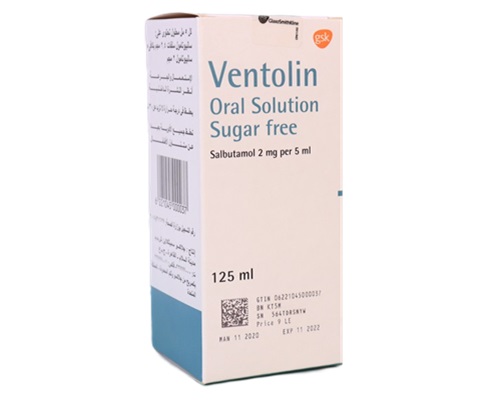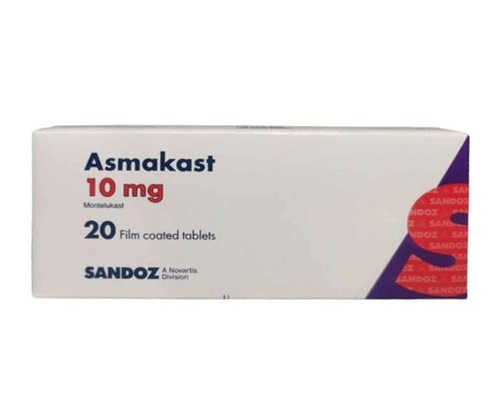Description
Trade name:
Symbicort
Compound:
Each dose contains: micronized budesonide 80 mcg, formoterol fumarate dihydrate 4.5 mcg.
Excipients: lactose monohydrate – 810 mcg.
Powder for inhalation dosed in the form of granules from white to almost white color.
Properties:
A combination drug for the treatment of bronchial asthma. Contains formoterol and budesonide, which have different mechanisms of action and exhibit an additive effect in reducing the frequency of exacerbations of bronchial asthma. The special properties of budesonide and formoterol make it possible to use their combination simultaneously as maintenance therapy and to stop attacks, or as maintenance therapy for bronchial asthma.
Budesonide is a GCS that, after inhalation, has a rapid (within a few hours) and dose-dependent anti-inflammatory effect on the respiratory tract, reducing the severity of symptoms and the frequency of exacerbations of bronchial asthma. When prescribing budesonide in the form of inhalations, a lower incidence of serious adverse effects is noted than when using systemic GCS. Reduces the severity of bronchial mucosal edema, mucus production, sputum formation and hyperreactivity of the respiratory tract.
Formoterol is a selective β2 -adrenoreceptor agonist. After inhalation, it causes rapid and prolonged relaxation of bronchial smooth muscles in patients with reversible airway obstruction. The bronchodilator effect is dose-dependent, occurs within 1-3 minutes after inhalation and lasts for at least 12 hours after a single dose.
With the combined use of formoterol and budesonide, the severity of bronchial asthma symptoms decreases, lung function improves and the frequency of exacerbations of the disease decreases.
Indications:
– Bronchial asthma (inadequately controlled by the use of inhaled GCS and short-acting beta 2 -adrenergic agonists as on-demand therapy, or adequately controlled by inhaled GCS and long-acting beta 2 -adrenergic agonists). Symbicort Turbuhaler 80/4.5 mcg/dose and 160/4.5 mcg/dose can be used as maintenance therapy and to relieve attacks;
– COPD (symptomatic therapy in patients with severe COPD (FEV<50% of predicted calculated level) and with a history of recurrent exacerbations, in the presence of severe symptoms of the disease despite therapy with long-acting bronchodilators).
Contraindications:
– Children under 6 years of age (for all dosage forms);
– Children under 12 years of age (for the dosage form containing budesonide 320 mcg + formoterol 9 mcg);
– Hypersensitivity to budesonide, formoterol or inhaled lactose.
Symbicort Turbuhaler should be used with caution in patients with pulmonary tuberculosis (active or inactive forms), with fungal, viral or bacterial infections of the respiratory system, in patients with thyrotoxicosis, pheochromocytoma, diabetes mellitus, uncontrolled hypokalemia, idiopathic hypertrophic subaortic stenosis, severe arterial hypertension, aneurysm of any localization or other severe cardiovascular diseases (ischemic heart disease, tachyarrhythmia or severe heart failure), with prolongation of the QT interval.
Use during pregnancy and lactation:
During pregnancy, Symbicort Turbuhaler should be prescribed only in cases where the expected benefit of therapy for the mother outweighs the potential risk to the fetus. Budesonide should be used at the lowest effective dose necessary to maintain adequate control of asthma symptoms.
It is unknown whether budesonide and formoterol are excreted in human breast milk. Symbicort Turbuhaler may be prescribed to nursing women if the expected benefit of therapy for the mother outweighs the potential risk to the child.
Side effects:
No increase in the incidence of adverse reactions was observed when the two drugs were co-administered.
The most common adverse reactions associated with taking the drug are such pharmacologically expected adverse reactions for beta 2 -adrenomimetics as tremor and tachycardia, which are usually moderate in severity and disappear within a few days after the start of treatment.
During the use of budesonide in COPD, bruising and pneumonia occurred at rates of 10% and 6%, respectively, compared with 4% and 3% in the placebo group.
From the central nervous system: often – headache; less often – psychomotor agitation, anxiety, nausea, dizziness, sleep disturbances; very rarely – depression, behavioral disturbances (mainly in children), taste disturbances.
From the cardiovascular system: often – palpitations; less often – tachycardia; rarely – atrial fibrillation, supraventricular tachycardia, extrasystole; very rarely – angina pectoris, blood pressure fluctuations.
From the musculoskeletal system: often – tremor; less often – muscle cramps.
From the respiratory system: often – candidiasis of the oral mucosa and pharynx, mild irritation in the throat, cough, hoarseness; rarely – bronchospasm.
Dermatological reactions: less often – bruising; rarely – exanthema, itching, dermatitis.
Allergic reactions: rarely – urticaria, angioedema, anaphylactic reactions.
Metabolic disorders: rarely – hypokalemia; very rarely – hyperglycemia, symptoms of systemic action of GCS (including adrenal hypofunction).
Systemic effects of inhaled GCS may occur when the drug is taken in high doses over a long period of time.
The use of beta 2 -adrenergic agonists can lead to an increase in the blood levels of insulin, free fatty acids, glycerol, and ketone derivatives.
Precautions:
It is recommended to gradually reduce the dose of the drug before stopping treatment and it is not recommended to stop therapy abruptly.
Symbicort Turbuhaler is not intended for initial selection of therapy in the early stages of treatment of bronchial asthma.
The patient should be reminded of the need to regularly take a maintenance dose of Symbicort Turbuhaler in accordance with the selected therapy, even in cases where there are no symptoms of the disease. Inhalations of Symbicort Turbuhaler for relief of attacks should be carried out only when symptoms occur, but the use of the drug is not indicated for regular prophylactic use, i.e. before physical activity.
Treatment with Symbicort Turbuhaler should not be started during periods of exacerbation or significant deterioration of bronchial asthma.
Method of administration and dosage:
Symbicort Turbuhaler is not intended for the initial treatment of intermittent and mild persistent asthma.
The dosage of the drugs included in Symbicort Turbuhaler is selected individually and depending on the severity of the disease. This must be taken into account not only when starting treatment with combination drugs, but also when changing the dosage of the drug.
In the event that individual patients require a different combination of active substance doses than in Symbicort Turbuhaler, beta 2 -adrenergic agonists and/or GCS should be prescribed separately in separate inhalers.
Bronchial asthma
Symbicort Turbuhaler 80/4. 5 mcg/dose and 160/4. 5 mcg/dose
Patients should be under constant medical supervision to adequately select the Symbicort Turbuhaler dose. The dose should be reduced to the lowest, at which optimal control of asthma symptoms is maintained. When complete control over asthma symptoms is achieved at the minimum recommended dose of the drug, the next step can be to try monotherapy with inhaled GCS.
There are two approaches to prescribing Symbicort Turbuhaler therapy:
- as maintenance therapy, Symbicort Turbuhaler is prescribed for continuous maintenance therapy in combination with a separate short-acting beta 2 -adrenergic agonist to relieve attacks;
- as maintenance therapy and to relieve attacks Symbicort Turbuhaler is prescribed both for continuous maintenance therapy and on demand when symptoms appear.
As a maintenance therapy
Adults (18 years and older) are prescribed Symbicort Turbuhaler 80/4.5 mcg/dose and 160/4.5 mcg/dose 1-2 inhalations 2 times/day. If necessary, the dose can be increased to 4 inhalations 2 times/day.
Adolescents (12-17 years) are prescribed Symbicort Turbuhaler 80/4.5 mcg/dose and 160/4.5 mcg/dose, 1-2 inhalations 2 times/day.
Children over 6 years of age are prescribed Symbicort Turbuhaler 80/4. 5 mcg/dose, 1-2 inhalations 2 times/day.
Once optimal control of asthma symptoms has been achieved with twice daily dosing, titration of the dose to the lowest effective dose, down to once daily dosing, is recommended in cases where the physician believes the patient requires maintenance therapy in combination with long-acting bronchodilators.
As a maintenance therapy and to relieve attacks
The patient must always have Symbicort Turbuhaler with him to relieve attacks.
In this case, the drug is especially indicated for patients with insufficient control over bronchial asthma and the need for frequent use of drugs to relieve attacks; with a history of exacerbations of bronchial asthma that required medical intervention.
Adults (18 years and older) are prescribed Symbicort Turbuhaler 80/4. 5 mcg/dose and 160/4. 5 mcg/dose; the recommended dose is 2 inhalations per day: 1 inhalation in the morning and evening, or 2 inhalations 1 time per day only in the morning or only in the evening. Some patients may be prescribed a maintenance dose of Symbicort Turbuhaler 160/4. 5 mcg/dose 2 inhalations 2 times per day. If symptoms occur, 1 additional inhalation should be prescribed. If symptoms continue to worsen within a few minutes, 1 additional inhalation is prescribed, but no more than 6 inhalations to relieve 1 attack.
Usually, it is not necessary to prescribe more than 8 inhalations per day, but it is possible to increase the number of inhalations to 12 per day for a short time. In patients who use more than 8 inhalations per day, it is recommended to review the therapy.
Symbicort Turbuhaler 80/4.5 mcg/dose and 160/4.5 mcg/dose as maintenance therapy and for relief of attacks is not recommended for children and adolescents under 18 years of age .
Symbicort Turbuhaler 320/9 mcg/dose
Adults (18 years and older) are prescribed 1 inhalation 2 times a day. If necessary, the dose can be increased to 2 inhalations 2 times a day. After achieving optimal control of asthma symptoms while taking the drug 2 times a day, it is recommended to titrate the dose to the lowest effective dose, up to taking it 1 time a day.
Adolescents aged 12-17 years are prescribed 1 inhalation 2 times a day.
COPD
Adults are prescribed Symbicort Turbuhaler 160/4.5 mcg/dose, 2 inhalations 2 times/day or Symbicort Turbuhaler 320/9 mcg/dose, 1 inhalation 2 times/day.
There is no need for special dosage adjustment for elderly patients .
Storage method:
At temperatures up to 30 °C. Keep the package tightly closed to protect against moisture penetration.









